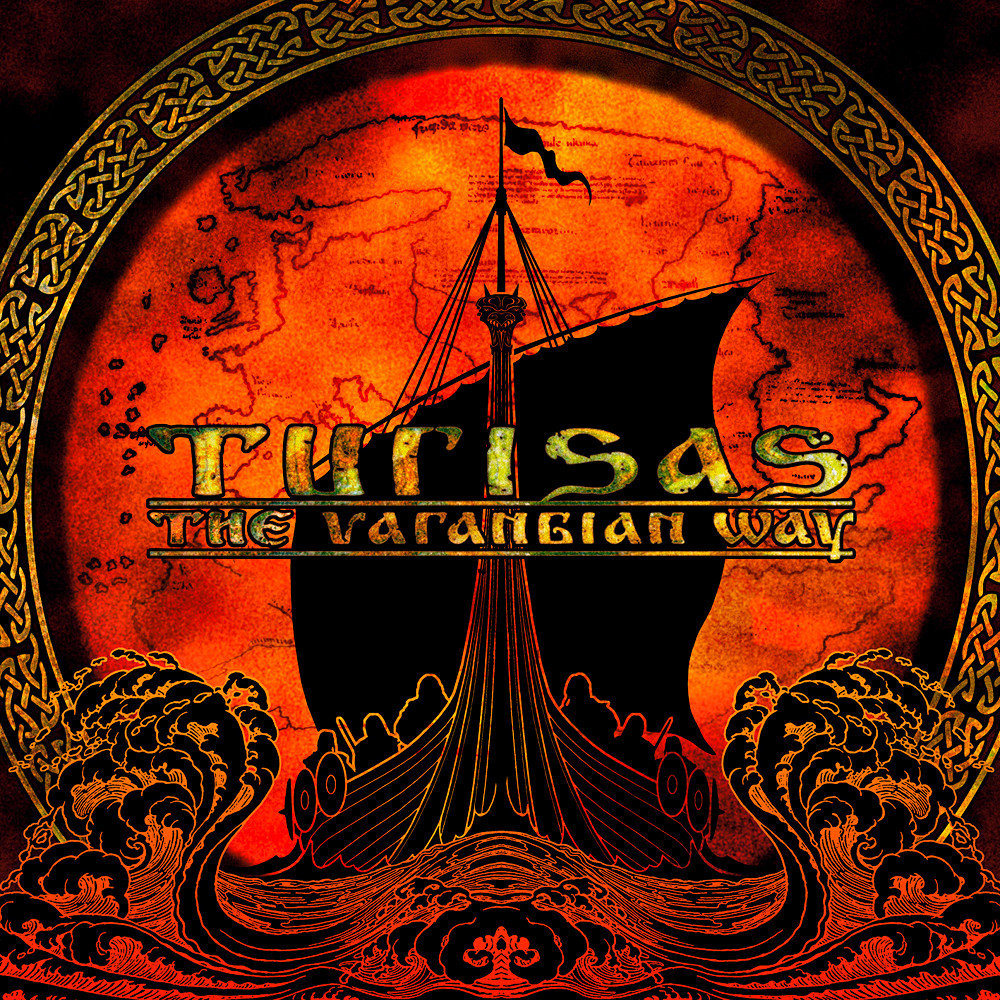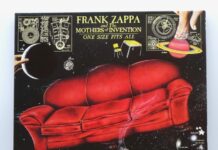Ahh, sweet Turisas! You stormed the Viking folk metal world with your debut in 2004 and took what you started and ran with it on your next album, 3 years later! Taking the concept of the Varangians, the Scandinavians who traveled the trade route along the Baltic Sea and Dnieper river system, “The Varangian Way” proved to be one of the newest, greatest releases on the genre’s market at the time! Today, on its 10-year anniversary, we’ve done a track-by-track overview of the album to get into why it was so iconic.

Who needs an intro track when you can kick things off with such oomph!? To this day, “To Holmgard and Beyond” is one of the best Viking/folk metal songs ever written. It has everything – bombastic dynamics, sublime playing, gorgeous vocals, and a story to boot. I read in an interview once that Mathias Nygård had actually designed this song to act as an intro track and I believe it was a great success. It is a beautiful start to the album and to this day remains one of my all-time favorite songs. The spoken storytelling combined with the introduction of characters in the lyrics, as well as the Viking choir make this a perfect song.
Portaging, for those who don’t know, is when your canoe hits a piece of water that isn’t deep enough to support it, so you flip the canoe and carry it over land (the place where this happens is also called a portage). As such, the story continues with “A Portage to the Unknown” and you can certainly guess what’s happening. The song opens with a really cool piece of accordion work by Janne “Lisko” Mäkinen before the choir vocals open up the story, which is backed up the entire time by the music, talking of the hardship of traversing the land when the “water’s changed to sand.” Nygård‘s growls are fantastic in this song. More points to the accordion three quarters of the way through.
If you want your de facto Finnish taste of Kalevala, “Cursed Be Iron” is the song for you, as it contains a line from the poem, “The Origin of Iron.” This is perhaps the most poetic of songs on the album, naturally, and is likewise one of the harshest and most beautiful tracks. There’s something about the rawness of the vocals combined with the blacksmithing noises and guitar-driven heavy riffs that contrasts with the simple accordion drone in the verses that makes this song a masterpiece.
The previous track flows sharply, yet efficiently, into the powerful “Fields of Gold.” The music is uplifting and strong, emphasized greatly by the vocals. If you weren’t convinced by now that these guys know how to use orchestration to get their point across, this piece should change that. You’re also able to get a real feel for TURISAS‘ style at this point. They know when to speed things up and slow things down to achieve the ultimate effect, as well as when to use orchestration and when to focus on instruments. This song just works.
This is likely a very unpopular opinion, but I’ve never actually been a big fan of “In the Court of Jarisleif.” I guess my standards for happy, folky instrumentals were set at a certain level by bands like ENSIFERUM and KORPIKLAANI, as well as my history of playing traditional folk music on the violin. While this song is lively and fun, it lacks a certain catchiness to my ear, sounding a bit messy (though the chaotic nature of the party may have been intentional in that sense). I suppose I feel like this song is trying a bit hard to be a few too many things – lively, catchy, heavy, fast, danceable, moshable – and it’s getting a bit too much of everything, including the time changes. Not a bad song, but I expected more. Props to the violins though – Olli Vänskä sounds fantastic in this very quick and tricky piece.
What has this album lacked so far? Gorgeous piano. No longer though, as the intro to “Five Hundred and One” features exactly that. The song rapidly turns into a dynamic mix of harsh and ponderous, as though there is conflict and turmoil within the mind. Once upon a time there was a site called thevarangianway.com, though it’s long since been taken down. It’s a shame because that site had detailed each song on “The Varangian Way,” and for the life of me I can’t recall what this was about.
Dangerous music reflects the danger of wild rapids as “The Dnieper Rapids” commences. Mirroring exactly that, the music then crashes around you in powerful waves – fast music and harsh vocals interspersed with the male/female choir. This song moves and flows like an unpredictable river, raging on and keeping the tension on the edge of the seat. Fun fact: the Varangians had seven large rapids that had to be portaged around, which all have descriptive names in at least Slavonic and Norse that mean things like “don’t sleep” or “ever violent.”
In order to have an album like this feel full circle, one would expect a song that works as beautifully as an outro as “To Holmgard and Beyond” did as an intro. “Miklagard Overture” is an absolute sucess on this front. This theatrical, bombastic track builds up to an incredible climax, again expertly blending clean and growling vocals, to bring the album to a fantastic close. The roar of “Constantiopolis!” feels so victorious, as the character(s) reach Miklagard, also known as Byzantium, Constantinople, or in modern days, Istanbul. This song is indeed an overture, with its epic choirs and wonderful flow. It concludes the album in a perfect way and paves the way for more theatrical songs later on, like “End of an Empire.”
There are special editions of this album that include the “Rasputin” cover of BONEY M‘s classic disco hit, as well as their popular hit single, “Battle Metal” from the album of the same name. The former is easily one of the best metal covers of anything ever, perfectly capturing the essence of the original while wrapping it in a unique, very TURISAS musical coating, while the latter is the de facto warrior song of the band’s day. It’s a nostalgic classic to hear live now, though having heard it so many times, it doesn’t pack the same punch as it once did – this song, perhaps, has a limited shelf life.
In the end, part of the beauty of “The Varangian Way” is that it’s not trying to be catchy or mainstream, rather focused entirely on telling the story and backing that up with appropriate music, which is sometimes not strictly beautiful, as the story was not strictly beautiful. I also like how the songs feel like stories on their own and thus can be listened to individually, but they also join together to create a whole concept album – few concept albums have achieved that. Furthermore, as has been pointed out on a few occasions, this album is devoid of battle songs, which helps the band to both separate themselves from MANOWAR-type cheese you often find in other Viking/folk bands, while simultaneously focusing on the emotional aspect of the journey and earning themselves a bit of scholarly respect. I don’t consider the album perfect, but I do think it is a wonderful portrayal of a story set in the real world.
Written by Bear Wiseman
Musicalypse, 2017
OV: 2477
Tracklist
- To Holmgard and Beyond
- A Portage to the Unknown
- Cursed be Iron
- Fields of Gold
- In the Court of Jarisleif
- Five Hundred and One
- The Dnieper Rapids
- Miklagard Overture
Lineup
Mathias “Warlord” Nygård – vocals
Jussi Wickström – guitars
Olli Vänskä – violin
Hannes Horma – bass
Janne “Lisko” Mäkinen – accordion
Tuomas “Tude” Lehonen – drums
Label
Century Media Records
Links
Recent posts
[recent_post_carousel design=”design-1″]






[…] lost all sense of what it was that made them good back in 2013. I love the transition from the very “To Holmgard and Beyond” intro into the gentle vocals; the time-change doesn’t bother me. Then, as Vincent said, it […]
[…] to listen to this song out of the album context. To me, this song sounds like TURISAS‘ “In the Court of Jarisleif” as covered by […]